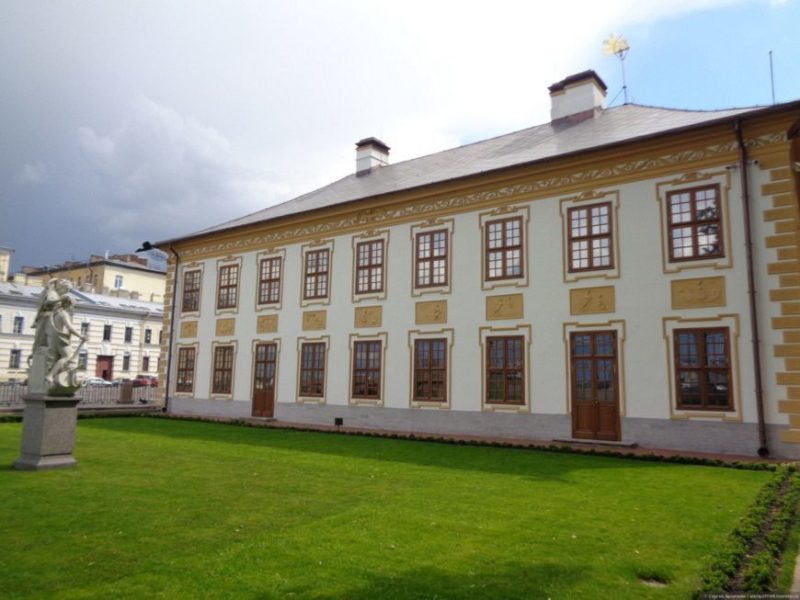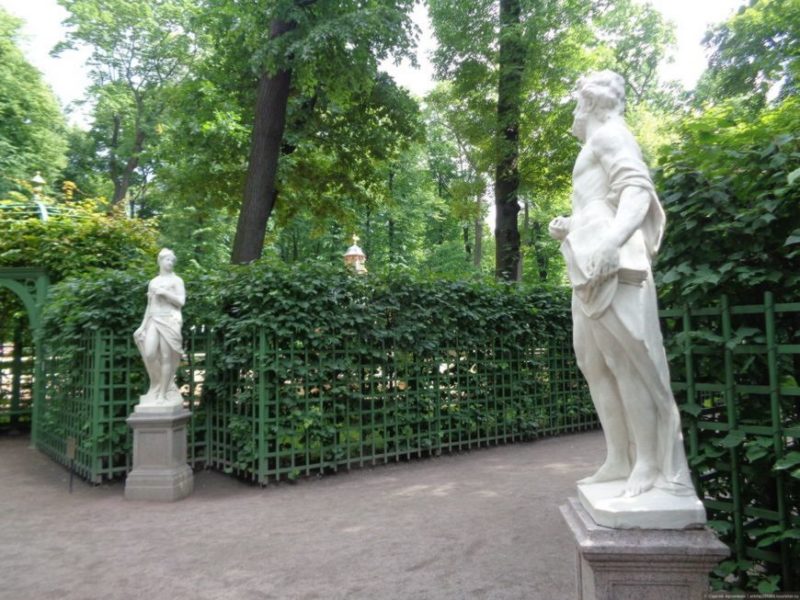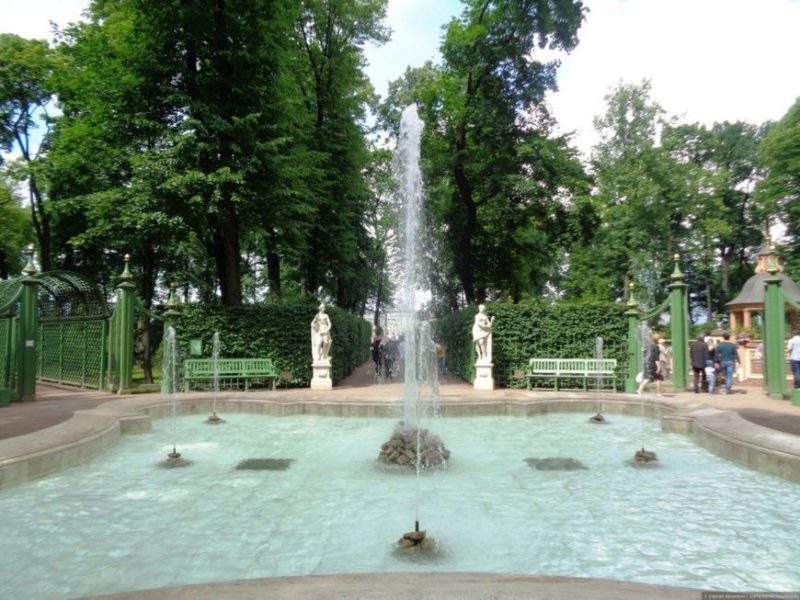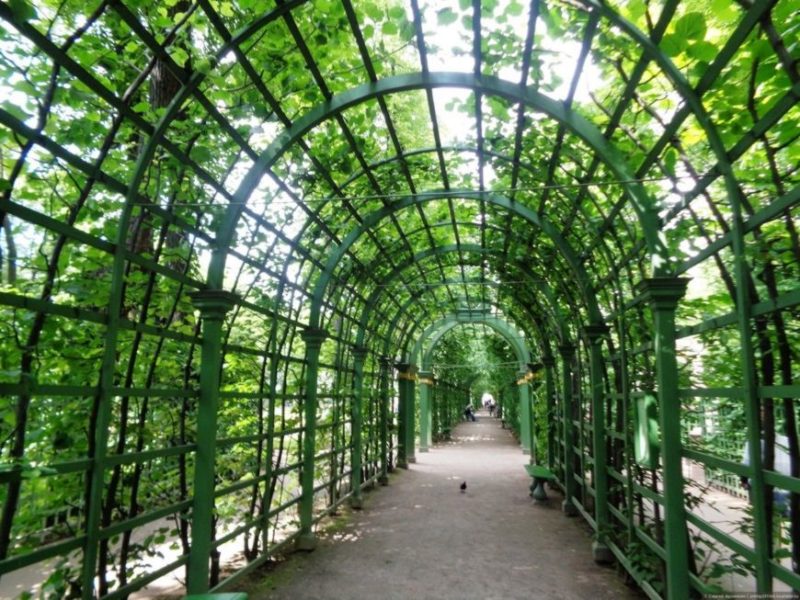Summer Garden in St. Petersburg
Summer Garden in St. Petersburg is a vivid example of landscape art. Originally used as an imperial residence, it gradually became one of the favorite places of rest for city residents. Many tourists tend to visit here, appreciate the beauty of the sanitized area, see the wondrous sculptural compositions and fountains. The lattice in the Summer Garden deserves special mention, as it has already become an independent symbol of the city, against which it is worth taking a photo.
Summer Garden in 2019
The planning of the garden preserved during restoration, conceived under Peter I, reflects the tastes of that time in general and the emperor in particular. The garden consists of three straight avenues going from the Neva, parallel to each other. The main alleys intersect the perpendicular. The summer garden is perfect for leisurely walks and a relaxing holiday. Thanks to the elements of landscape design that decorate the park, the place has become popular among fans of photo shoots. Especially often the background for the pictures is the element Berso - an arched gallery, entwined with plants.
Also here you can see buildings for various purposes, fountains, sculptural compositions, stand by the pond, watching the measured life of waterfowl. Lovers of architecture and history will be interested in the summer palace of Peter the Great, which is now a museum. The Summer Garden is part of the Russian Museum.
Monuments of the Summer Garden
It is no coincidence that the Summer Garden was chosen as the site for the installation of the monument to Krylov, first, the fabulist loved to walk in it, and secondly, under Peter I, a statue of Aesop, the great ancient Greek fabulist, was installed here and the sculptural images of the characters of his works. These compositions are not preserved, so it was quite reasonable to place in the garden a monument in honor of Krylov, a talented fabulist of his time. The bronze monument was erected in 1855, animals are on its pedestal with amazing realism - the characters of the writer's fables.
Sculptures
At the request of the emperor, sculptures for the summer residence were purchased in Italy, many works were made by Italian masters of the late XVII - early XVIII centuries. Nowadays in the Summer Garden there are copies of sculptures made of artificial marble. The restored originals are in the Mikhailovsky Castle. The decision to transfer them here was due to the fact that the compositions are destroyed under the influence of weather conditions, besides acts of vandalism were noted.
Vacationers can see sculptures of various subjects - historical (busts of rulers), mythological (Nereid, Minerva, etc.), allegorical (depict abstract concepts).
The Grate in the Summer Garden
The fence affects many, it is both self-sufficient and does not overlap the view of the garden. It was created in the second half of the XVIII century, among its authors point out Felten and Egorov. Metal parts of the fence are harmoniously combined with gold and granite columns. After the assassination of Alexander II in the Summer Garden, it was decided to install a chapel on the site of the main gate in honor of the king’s salvation. This innovation has seriously violated the proportions of the fence. In the XX century, the chapel was dismantled, and the fence was restored.
Fountains
The fountains really enliven the park. After the flood of 1777, they did not consider it necessary to restore the fountains, many years later, thanks to the drawings that had been preserved and the research carried out, it was possible to return this decoration to the garden. "Tsaritsyn" fountain was named in honor of Catherine I, who took the ladies near him. The "Piramida" fountain is an exact copy of the fountain of the same name in Peterhof. The fountain-statue “Nereid” is also interesting, the nymphs who were considered patrons of sailors were called nereids. The "Koronny Fountain" is especially pompous.
Story
The Garden as a Summer imperial residence was created by order and under the direction of Peter I. Prominent architects of that time, including Matveyev, Rastrelli, Trezzini, Leblon, were engaged in the implementation of the project. Talented gardeners - compatriots and foreigners took part in the works. Garden alleys were decorated with trellis - evenly trimmed shrubs that looked like green walls. Some buildings in the Summer Garden were new to Russia, for example, the grotto that appeared on the bank of the Fontanka. In the summer residence, official receptions and celebrations were held.
In 1777, the flood caused significant damage to the garden; moreover, at that time, regular parks lost their relevance due to European interest in landscape parks. Therefore, the restoration work was not global. In 1824, the garden experienced another flood, after which it was restored for several years. In the 19th century, ordinary residents of the city were allowed into the park for walking.
During World War II, the garden also suffered, but valuable sculptures could be saved from destruction. In the early 2000s, they began to develop projects for the restoration of a landmark place; in 2012, they managed to complete all the work and resume access of residents and tourists to the park.
It may also be interesting
- How to travel in Saint Petersburg without living your home
- Four of the ten best restaurants in the country are in St. Petersburg
- The first Holocaust museum in St. Petersburg
- A scientist from St. Petersburg created the biochronicle of Peter the Great.
- 10 interesting facts about Saint-Petersburg streets



